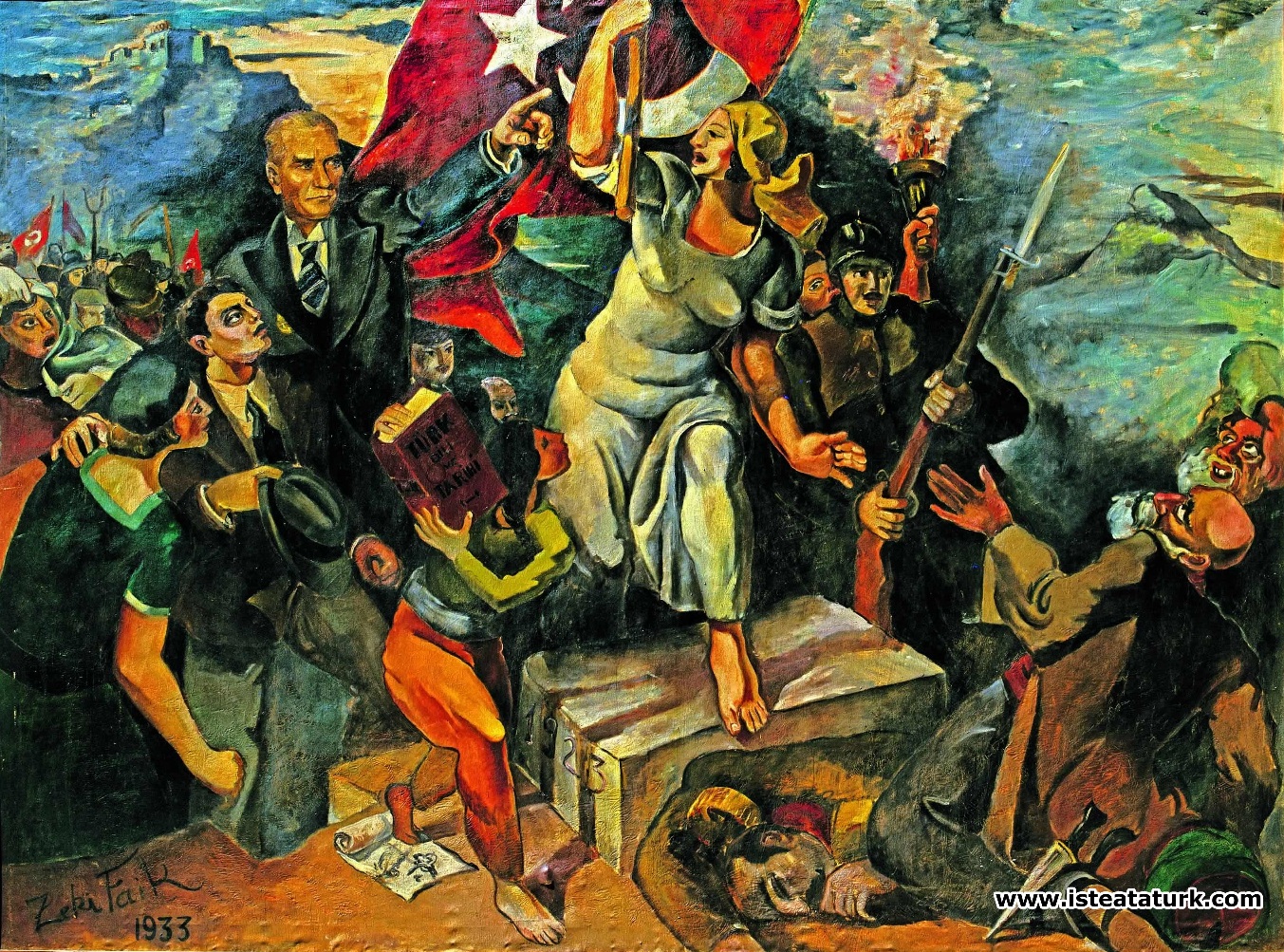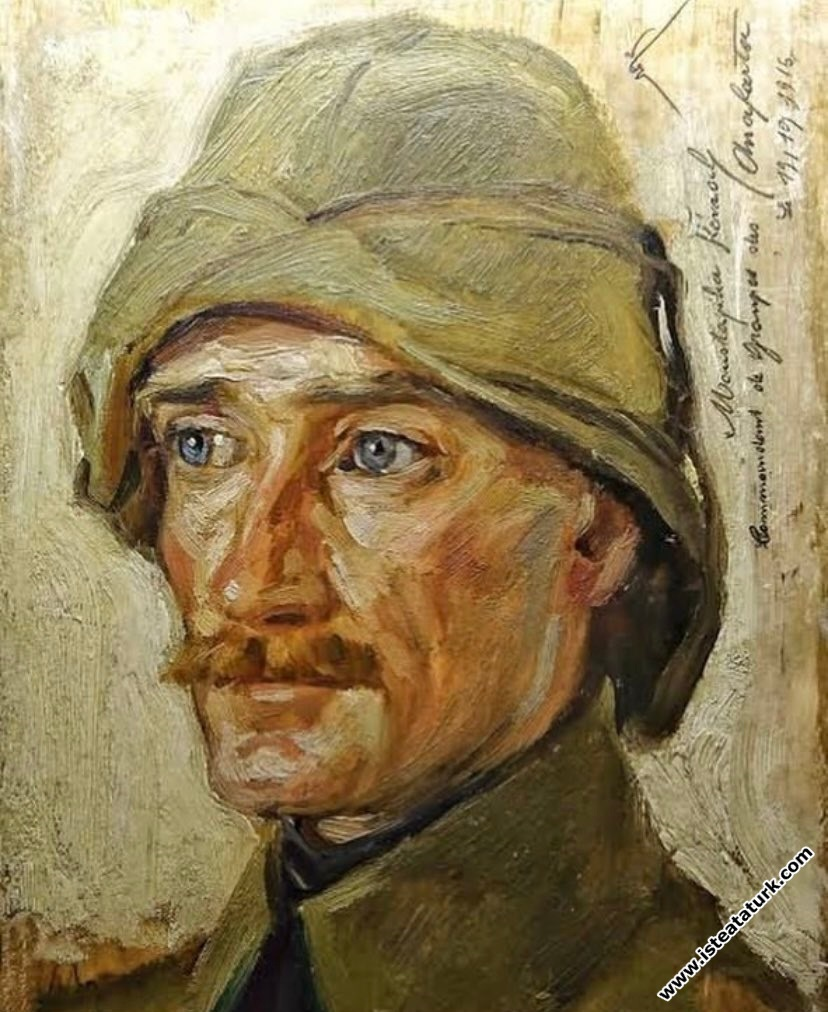
Zeki Faik Izer, On the Road to Revolution, 1933
Character Size
Zeki Faik Izer, On the Road to Revolution, 1933, 176 x 237 cm.
“On the Road to Revolution”
“On the Road to Revolution” by Zeki Faik Izernamed 176 x 237 cm. His work was made in 1933. The artist also; “... I was inspired by Delacroix. Actually, this idea was given to me by Sculptor Ali Hadi (Bara). 'He stole it,' they said. It was clear, whereas our situation was…” and his painting, in which he stated that the element order and schematization of the painting was inspired by Delacroix's painting “Liberty Leads the People”, was highly appreciated by some circles. For example, Nurullah Berk, who evaluated the painting, said, “... there is no doubt that it was affected in terms of hoarding. But I wonder which artist did not choose another work that he saw fit for his temperament and was not inspired by it...?” saying; Gültekin Elibal also said to those who criticize the painting; They defended the painting and its artist by saying, “However, starting from respect for tradition by taking at least one arrangement as a basis, should not be considered as far from art as it is thought”. Atatürk, who opened the Istanbul State Painting and Sculpture Museum after the Second Turkish History Congress, liked this painting very much, according to the memories of Halil Dikmen, the Museum Director of the period. In fact, according to Dikmen, Atatürk asked him to explain the subject of the painting to himself, and Halil Dikmen said; “The work is a representative painting. In the upper left (lower) corner of the table is a group of people; this community represents the youth who are advancing on the path you have shown, in the right corner, there is a second community at the bottom, which shows how reactionary reaction was crushed in the face of your move forward”. Then Atatürk said “beautiful” and left the painting. As Gültekin Elibal asked, is it the subject of the painting that Atatürk finds 'beautiful'? Or was it the composition and stylistic quality of the painting that he could not know to be 'inspired'?
Zeki Faik Izer (April 15, 1905, Istanbul - December 12, 1988, Istanbul)
He received his first painting education from Agah Efendi while he was in primary school. He started writing poetry at the age of 13. His poems were published in the magazines Insan and Akbaba. He entered Sanayi-i Nefise Mekteb-i in 1923 and received his basic art education from Hikmet Onat. He entered the İbrahim Çallı Workshop. In 1928, he passed the European exam and went to Paris. He attended the Andre Lhote and Emile-Othon Friesz Workshops. He studied frescoes and ceramics at the Paris Fine Arts High School. In 1930, a still life was exhibited at the Grand Palais "Autumn Exhibition".
Izer, who was educated in Paris between 1928-1932, became an art teacher at Gazi Education Institute in 1932. Shortly after, he was appointed to Atatürk Boys' High School. He resigned and returned to Istanbul. He became one of the founders of Group D in 1933. He went to Paris for the second time in 1934, staying for two years.
In 1937, he entered the Istanbul State Academy of Fine Arts photography workshop. In 1939, he went to Eskişehir as part of the Country Trips organized by the CHP. He opened his first personal exhibition at İsmail Oygar Gallery in 1945. He participated in various exhibitions, made wall painting applications.
Between 1948-1952, he served as the Director of the Istanbul Academy of Fine Arts and the Head of the Painting Department. In 1949 he went to France, Germany and Italy to conduct studies.
He founded the Turkish Art History Institute in 1951. His articles on art were published in various magazines. He retired in 1968, an exhibition was held in his name at the Academy. This was his 13th solo exhibition. Between 1971-1984 he lived in Paris.
In the first years, he tried impressionism under the influence of his teacher Çallı, and worked for a while realistically and depending on nature. During his student years in Paris, he applied the influences of Cubism and Expressionism in a measured way in his art. He studied the romantics. After the 1960s, he turned to lyrical abstractions that emphasized the relationship between music and rhythm in painting. In painting, he gave importance to the pictural and internal rather than the pattern structure. A sensitive agility and sincerity can be seen in his works.
After 1976, he dealt with the rhythm and speed of the kinetic with an expressive approach in the patterns and paintings he worked on from the television screen. He wanted to make movement and rhythm pictorial. During these years, he experimented with collage. From the beginning, he saw the subject only as the starting point of the work of art, not as a goal. He wanted to describe the rhythm of nature, its contradictions, the harmony of opposites. He wanted to use the East-West influence as the harmony, movement or rhythm of the contrasts. He was influenced by Chinese and Japanese arts.
Source: 1. Figure in Republic Painting with Examples from Some Atatürk Paintings, Assist. Assoc. Dr. Seyfi President, JOURNAL OF ATATÜRK RESEARCH CENTER, Issue 63, Volume: XXI, November 2005
2. www.turkishpaintings.com
